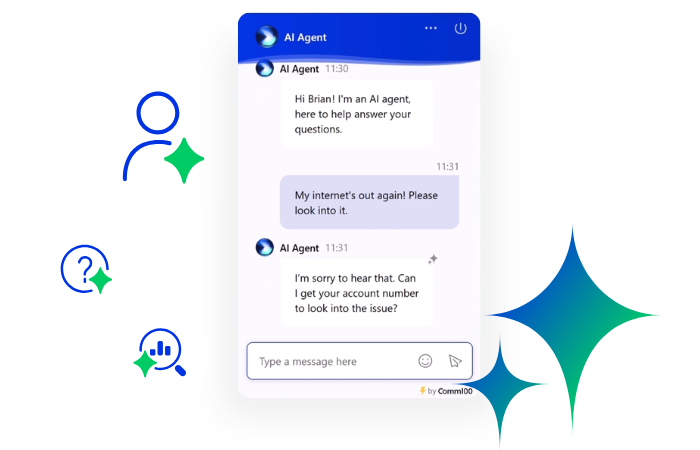In the past few years, massive social changes have upset the business community. These changes have occurred across industries and have accelerated the adoption of new technologies. Further social upheavals amongst workers and customer expectations have also occurred.
Ultimately, customer service and contact centers have not been immune to these changes. In this article, we’ll look at some of the new challenges that have emerged to impact contact centers. Then we’ll analyze how your organization can respond to these changes and the ways in which technology can benefit your ability to serve customers.
Challenges have emerged in the past two years
Experts agree that the Covid-19 pandemic and its fallout has drastically changed our world. Many changes, which seemed like far-flung future possibilities, occurred overnight. Demand shifted in many areas and supply chains, which were once thought to be immutable, became disrupted and susceptible to upset.
Consider, for example, that in Toronto, the cost of a 900-square-foot apartment is between $2,300 and $2,600 in 2022. Prices have soared in other areas too, particularly as inflation approaches double-digit numbers in some places.
In any case, the resulting challenges have made certain that customer service has to adapt and make transformational changes to keep up with how the rest of the world has changed.
For contact centers, this means that outsourcing, IVRs, and seasonal hiring practices will have to change. Today, consumers are empowered in all sorts of ways, from on-demand ordering services like Uber and other apps to taking their qualms to social media. In the end, consumers will “put you on blast,” and you may find yourself staring down the barrel of a social media witch hunt if your company comes up short.
Adding to the complexity is the Great Resignation, which has empowered workers to seek jobs with better pay, benefits, and flexibility. Contact centers have historically come under fire for their overbearing employee monitoring practices. To stay competitive and acquire the talent necessary, contact centers and customer service need to adapt, but how do they do it?
Redefining the Customer Agent Experience
Looking towards the Great Resignation and the pandemic, many workers have begun rethinking what their expectations at a job are. Customer service representatives were not immune to this either. The past two years have seen upheavals in the amount of talent working at contact centers as workers moved on to new jobs or just quit entirely.
For contact centers, and managers responsible for providing excellent customer service, this has exacerbated personnel problems. Supply chain issues and other upsets in how day-to-day business is done have placed tremendous demands on customer service representatives. In short, retaining staff has never been harder.
Automation doesn’t just happen on the front end. Whether you’re providing support for business checking accounts or an eCommerce platform, automation happens at all levels of the agent experience.
Today, the best way to combat this issue of employee burnout, aside from offering higher pay and incentives, is to enable contact center automation. The primary benefit of contact center automation is that it speed lines resolving customer issues, but as a secondary benefit, it can transform agent responsibilities.
Contact center automation means automating tier 1 customer service requests and expanding agent responsibilities to more sophisticated customer challenges. This means that agents are free to resolve customer issues that require creativity and empathy.
Furthermore, contact center automation enables agents to learn new skills and shifts the strategy from answering as many calls, chats, and texts, as possible. Instead, agents can focus on building value for the brand.
Automation includes unifying your omnichannel experience. For example, your contact center should integrate with customized software that can send follow-up surveys and reminders via text message. This type of integration streamlines your customer experience from start to finish and lets your team center its efforts on customers.
Improving Customer Experience
The past two years represent unprecedented changes when it comes to customer demands. Typically, contact centers experience demand spikes because of holidays, seasonal changes, service issues, and product recalls. However, customer culture has changed dramatically. Today’s customers expect direct, immediate contact. Customers want to be able to pick up a phone, send a text message, and receive an immediate response that begins solving their problem immediately.
Again, automation plays a key role in enabling a better customer experience. Contact center automation avoids the issue described by the New York Times as “A Nation on Hold” back in 2021. With omnichannel automation, wait times can become a thing of the past. Whether customers approach you via telephone, email, text, or webchat, automation can resolve simple requests quickly and easily.
Today, embracing AI and machine algorithms can quickly improve your service. In many cases, these automated services can offer similar or even better customer satisfaction scores to regular human customer service agents. Leveraging conversational AI beats out traditional IVR because it allows customers to speak naturally instead of dealing with the hassle of imperfect prompts.
Utilizing contact center automation means that your entire omnichannel experience will be upgraded. In addition to leveraging machines for directing calls, you can also utilize technology to analyze data and insights you gather from incoming customer requests.
As you gather your data and insights, you can begin building personas of your customers similar to how you would for a marketing endeavor. Your contact center personas can then help you quickly identify and filter requests. Tier 1 requests can instantly be automated 24 hours a day, 7 days a week, 365 days a year. This means that straightforward requests, like requests for shipping updates or order information, can be resolved at the drop of a hat. More sophisticated requests can then be expedited to your well-trained service team to resolve bigger, more sophisticated issues.
Throughout this process, data becomes the ultimate service tool of your contact center. Each interaction is an opportunity to further develop insights on customer needs and — in the long run — provide better service for the next interaction.
Conclusion
As the pandemic continues to linger on and the Great Resignation shows no sign of slowing up, contact center managers will have to shift their approaches to the emergent issues facing customer service today.
Contact centers will have to utilize emergent technologies like AI and machine learning in order to respond efficiently to these developments. Today, customer service has totally changed, and in order to stay ahead of the curve your company will have to be sure to adapt.






